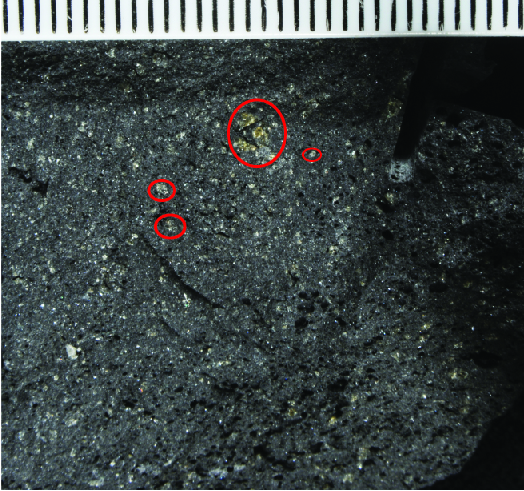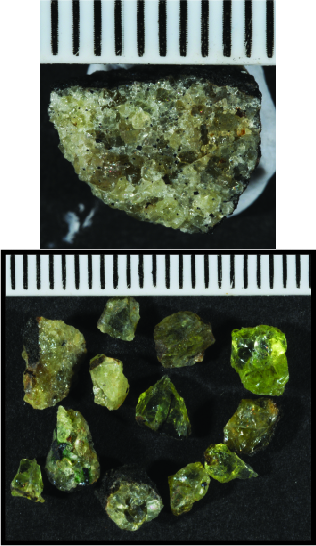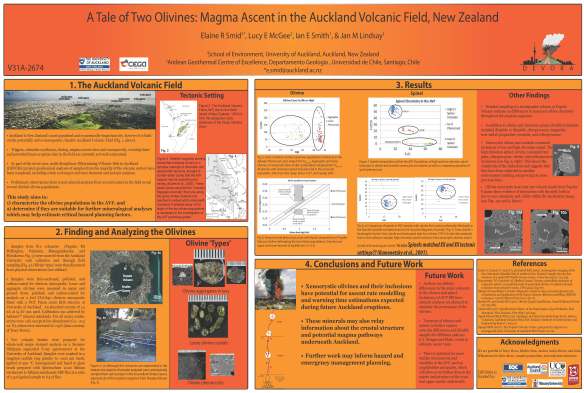I wanted to share the poster that I created for the American Geophysical Union’s Fall 2013 scientific conference.
The star of my poster is a mineral called olivine. Olivine is one of my very favorite minerals for many reasons. One, it is quite pretty, very common, and easy to identify. (The gem quality version of olivine is known as peridot, or August’s birthstone.) Secondly, it is a relatively simple mineral to understand chemically, and it can tell us a lot about the conditions under which it formed.

Peridot is just a gemstone-quality olivine. By Michelle Jo (Own work by Michelle Jo) [Public domain], via Wikimedia Commons
![Green sand. By Corwin Hee (Own work) [CC-BY-SA-3.0 (http://creativecommons.org/licenses/by-sa/3.0)], via Wikimedia Commons](https://cityofvolcanoes.files.wordpress.com/2014/03/green_sand_beach.jpg?w=584)
Green sand from a beach in Hawai’i. By Corwin Hee (Own work) [CC-BY-SA-3.0 (http://creativecommons.org/licenses/by-sa/3.0)%5D, via Wikimedia Commons
If you look at any lava around Auckland, you will usually be able to pick out a few green specks. If you do, you have just identified olivine! This olivine most likely crystallized in the magma or lava as it cooled. We call those crystals phenocrysts.

Olivine crystals in basalt–I’ve circled a few, but they are everywhere in this Auckland lava sample. Photo by Elaine Smid.
With my research, I’m looking at the chemistry of many olivine crystals. Some are phenocrysts that crystallized and grew in the magma. Then there are the more interesting ones. They look different and their chemistry doesn’t match the phenocrysts. We think these exotic crystals formed deep in the Earth or are pieces of old crust that were broken off and carried up from the depths of the Earth by the magma. These olivines, called xenocrysts, erupted onto the surface with the lava for us to find.

These are olivine xenocrysts found in the Auckland Volcanic Field. In the top picture you can even see the black inclusions trapped in the olivine. Photo by Elaine Smid.
I have done some preliminary chemical analyses on these olivines to see what we can find out. I found little inclusions of other minerals in them. These inclusions may offer some clues about how deep the olivines lived, and what conditions they endured, before they were snatched away from their home and taken on a ride to the Earth’s surface in Auckland! The hope is that we can do some more studies on these minerals to try to figure out how fast magma rises in Auckland, and maybe learn a little bit about the rocks underneath Auckland, as the magma travels through all that to get to us.


Pingback: A Volcanic Experience: Interning For DEVORA | City of Volcanoes